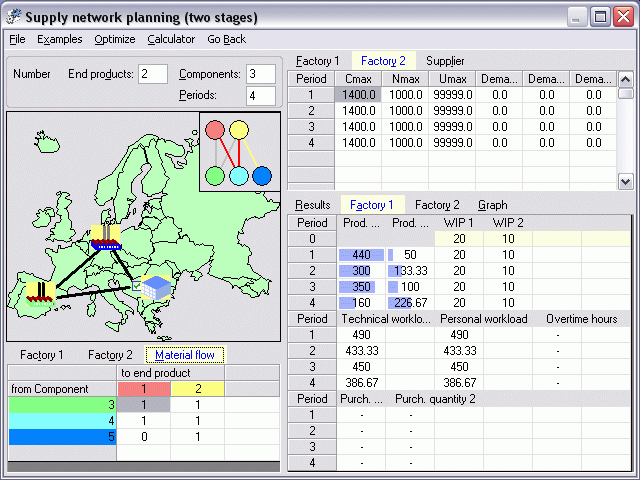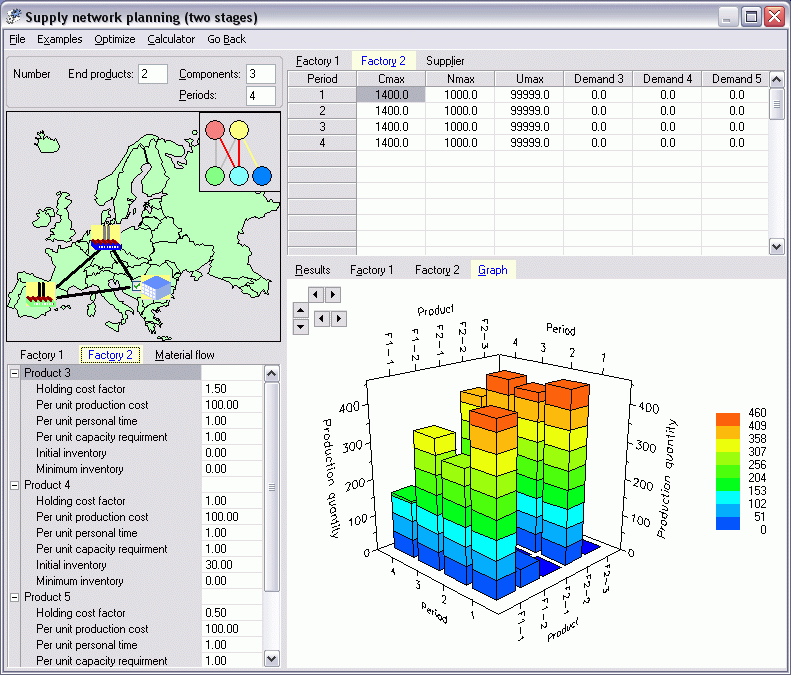
Supply Network Planning: two stages
In this module a two-stage supply network
is considered.
The main trade-off considered exists between
- inventory costs
- overtime costs and
- purchasing costs
In this module two factories
and optionally external supplies are modeled.
Factory 1 produces up 3
end products. Factory 2 produces up
to 3 components, that are delivered to factory
1 and used for the production of the end products. Both factories may purchase
products from an external source. This source is represented by a single supply
node. The maximum planning horizon includes 24 periods.
The user interface of the module looks as follows.


The products a numbered from 1 to n (end products) and (n+1) to
(n+m) (components). Then material flow (BOM structure) is described via the
table shown and depicted in the graph. The external source (which in fact may
be several suppliers) is able to deliver end products to factory 1 and components
to factory 2. Product-specific external demands may be assigned to each factory.
Transportation between factories is neglected.
In both factories maximum total inventory
capacities and product-dependent minimum
inventory levels may be considered.
In what follows two situations supported by this module are described.
Application 1: Two factories, no supplier
The LP model looks as follows:

s.t.




Symbols:
| k |
index of products |
| t |
index of periods |
| K |
set of indices of all products |
| K(s) |
set of indices of products produced in factory s |
| q(jk) |
number of units of component j required to produce
of unit of end product k |
| a(k) |
personal capacity requirements per unit
produced |
| b(k) |
technicall capacity requirements per
unit produced |
| l(k) |
inventory holding cost |
| u(t) |
overtime cost |
| C(t)max |
available technical capacity |
| U(t)max |
maximum overtime |
| N(t)max |
available personal capacity |
| L(kt) |
inventory of product k at the end of period t |
| U(t) |
overtime (hours) |
| X(kt) |
Produktionsmengen |
Application 2: Two factories,
supplier
The second application adds the external supplier to the model.
Assumptions:
- linear objective function and constraints
- multi-stage supply chain
- maximum 3 end products and 3 components
- maximum 24 periods
- maximum two factories
Literature:
- Silver/Pyke/Peterson (1998)
|



